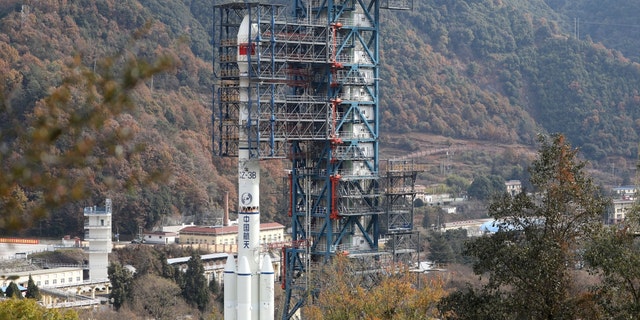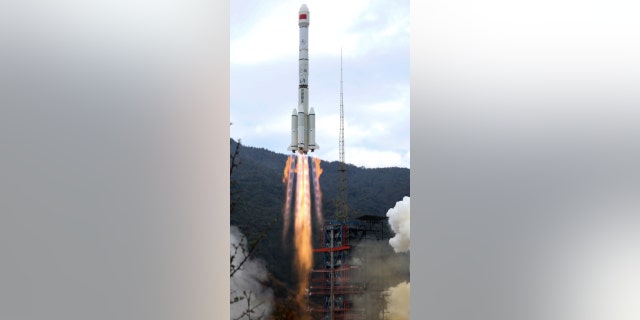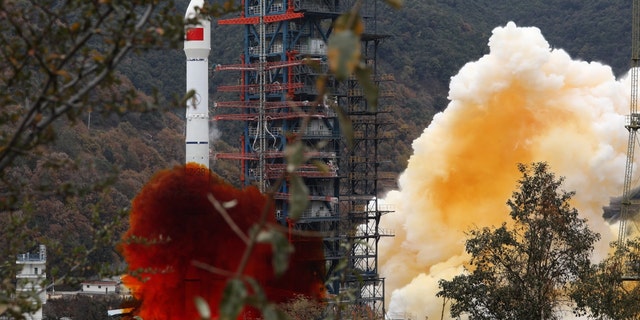The Philippine Space Agency said it was recommending “precautionary measures related to expected unburned debris” from a Chinese rocket launch on Thursday.
In the country’s last space launch of the year, a Long March 3B rocket lifted off from the Xichang Satellite Launch Center in Sichuan Province, China.
The rocket was carrying the Shiyan-10 02 satellite.
The Philippine Space Agency, upon confirmation of the planned launch dates, said it immediately issued an advisory to all relevant government agencies on the estimated drop zone area and proposed the issuance of appropriate warnings on air and marine access.
2022 SPACE STORIES THAT ARE OUT OF THIS WORLD

A Long March 3B carrier rocket carrying the Shiyan-10 02 satellite is ready to blast off from the Xichang Satellite Launch Center on Dec. 29, 2022, in Xichang, Liangshan Yi Autonomous Prefecture, Sichuan Province of China.
(Li Jieyi/VCG via Getty Images)
“Based on the Notice to Airmen issued by the Civil Aviation Administration of China to the Civil Aviation Authority of the Philippines, expected unburned debris, such as the rocket boosters and payload fairing, is projected to fall within a drop zone area located within the vicinity of Recto bank, approximately 137 kilometers from Ayungin Shoal and 200 kilometers from Quezon, Palawan,” the agency explained. “The unburned debris is designed to be discarded as the rocket enters outer space. While not projected to fall on land features or inhabited areas within the Philippine territory, falling debris poses danger and potential risk to ships, aircraft, fishing boats and other vessels that will pass through the drop zone.”

A Long March 3B carrier rocket carrying the Shiyan-10 02 satellite blasts off from the Xichang Satellite Launch Center on Dec. 29, 2022, in Xichang, Liangshan Yi Autonomous Prefecture, Sichuan Province of China.
(Li Jieyi/VCG via Getty Images)
The actual drop zone area is subject to change due to factors including the Earth’s rotation, weather and climate conditions.
HUBBLE IMAGES SHOW STARS IN GLOBULAR CLUSTER GLEAMING WITH ‘NEBULOSITY’
In addition, there is a possibility for the debris to float around the area and wash toward nearby coastlines.

A Long March 3B carrier rocket carrying the Shiyan-10 02 satellite blasts off from the Xichang Satellite Launch Center on Dec. 29, 2022, in Xichang, Liangshan Yi Autonomous Prefecture, Sichuan Province of China.
(Li Jieyi/VCG via Getty Images)
The agency said that the possibility of an uncontrolled re-entry to the atmosphere of the rocket’s upper stages returning from outer space cannot be ruled out.
CLICK HERE TO GET THE FOX NEWS APP
It said members of the public should act immediately to inform local authorities if suspected debris is sighted and warned against retrieving or coming in close contact with these materials that “may contain remnants of toxic substances such as rocket fuel.”
